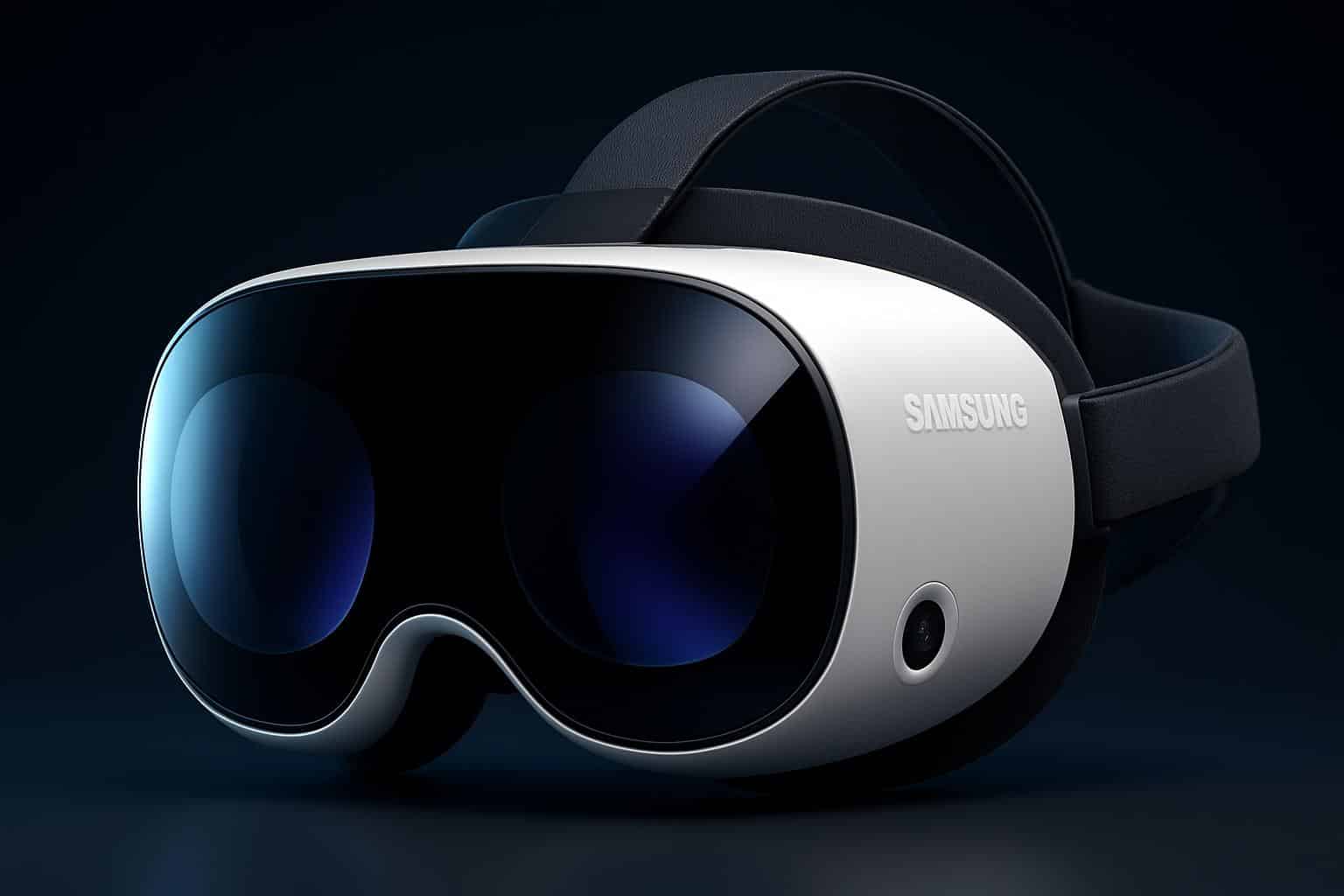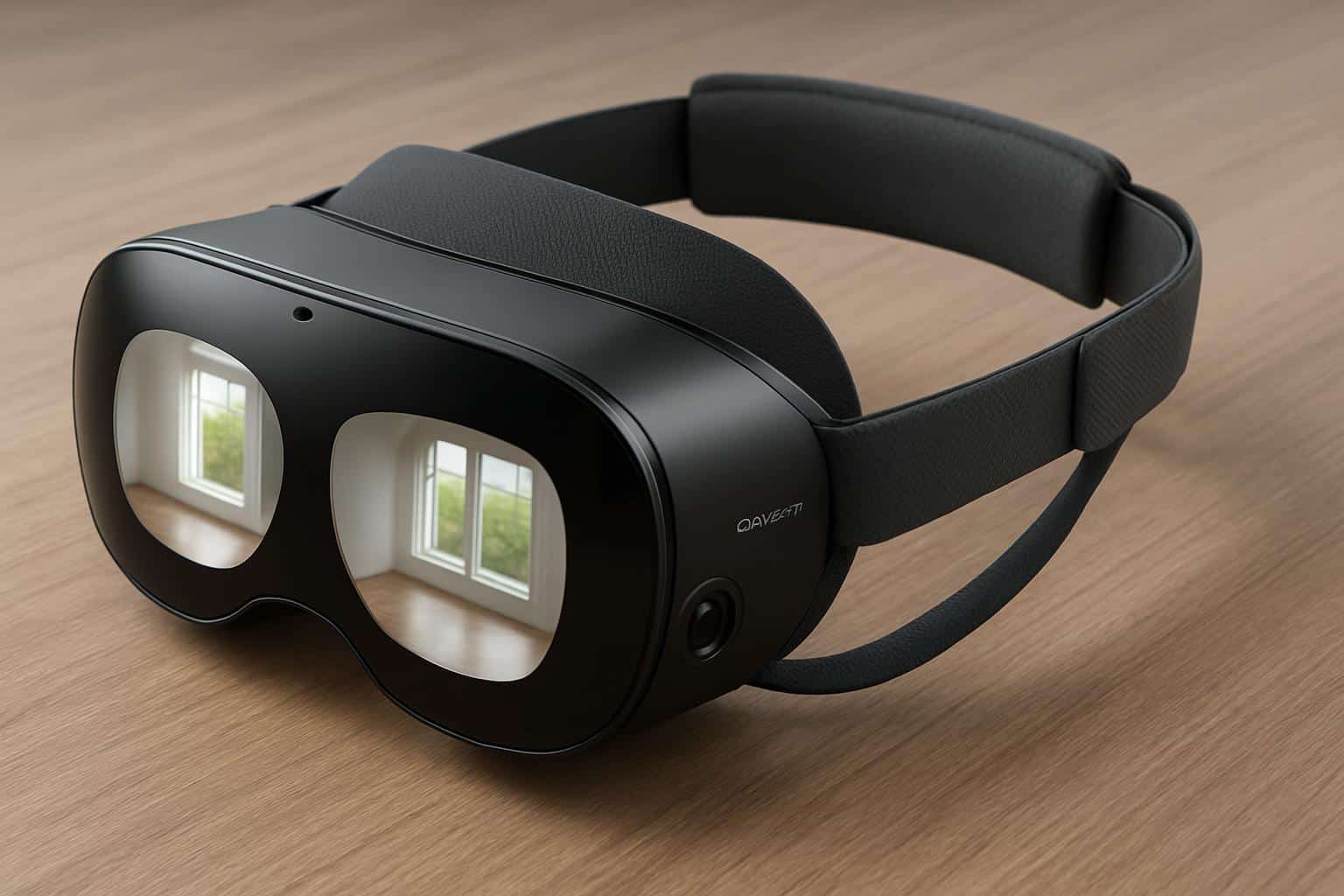A massive leak has just offered the most in-depth look yet at Samsung’s first mixed reality headset, likely to be known as Galaxy XR. The reporting, credited to Android Headlines (and backed by Qualcomm collateral and past public demos) sketches hardware, software, and experience details that would place Samsung in stark competition with Apple’s Vision Pro while undercutting more cumbersome VR-first devices from Meta.
None of this is official yet, but the chorus of information meets Samsung’s partnerships with Google and Qualcomm in harmony—it answers the most common buyers’ questions about a next-gen XR device: comfort, clarity, control, battery life.
- Design Focused on Comfort and Balanced Weight Distribution
- Display Screens Aim for Maximum Visual Clarity
- Rich Sensors for Hands, Eyes, and Voice Control
- Android XR, One UI XR Integration, and On-Device AI
- Snapdragon XR2 Plus Gen 2 And Battery Realities
- Controllers Are Still in the Mix for Precision Input
- Competitive Outlook, And What We Still Don’t Know

Design Focused on Comfort and Balanced Weight Distribution
Renders in the leak depict a headband-and-strap system dedicated to marathon comfort: fat forehead and rear seating pads, a rear fit dial, and a left-side port for an external battery pack.
That battery relocation is significant. The weight of the visor is now down off your face, which should reduce front-heavy pressure—an often-cited problem of early mixed reality headsets.
The headset is said to weigh about 545 grams. This would be a fair bit lighter than many spatial computers; multiple teardowns and reviews rank Apple’s Vision Pro at somewhere between around 600 to 650 grams depending on strap configuration. A touchpad on the right strap takes care of your fast actions, like recentering and switching between immersive VR experiences and color passthrough. A pair of built-in two-way speakers also deliver spatial audio without needing earbuds, and detachable light shields are designed to block out environmental glare for uninterrupted VR-ing.
Display Screens Aim for Maximum Visual Clarity
As for the display optics, the leak suggests right and left dual 4K micro-OLED panels with a total of 29 million pixels—or around 4032 pixels per inch. As a point of reference, Apple lists 23 million pixels on Vision Pro’s displays as its public number. That pixel density—combined with the photorealistic contrast that comes naturally to micro-OLED—should hopefully reduce screen-door effect nuisances and push text into legibility for productivity apps, a common thorn in the side of lower-res headsets.
Venting on the bottom of the device indicates active thermal management is occurring around those optics, something that micro-OLED demands. We’re also expecting spatial audio with the speakers on the strap, as has been a feature of most other high-end AR/MR devices through using head-tracked sound cues to place virtual content in reality.
Rich Sensors for Hands, Eyes, and Voice Control
It looks like Samsung is all about controller-free interactions but still making sure to give us dedicated controllers. The front face is said to conceal multiple cameras for hand tracking, with more sensors underneath enabling gestures below eye level—they’re crucial if you want to type or select a menu naturally. Two forward cameras near the nose bridge are almost certainly for color passthrough so you can experience your surroundings with minimal latency.
A focused depth sensor around the forehead is designed to be able to map walls, tables, floors, and other geometry for steadying virtual windows. Four cameras behind the lenses also monitor eye movement for precise UI targeting and foveated rendering (an efficiency technique that sharply renders what you’re looking at while dialing back detail in your peripheral vision). Beamforming mics are also meant to block out noise for voice commands in noisy rooms, a feature that has been table stakes for years now on premium head-worn equipment.

Android XR, One UI XR Integration, and On-Device AI
It’s at the software layer that Samsung’s extensive ecosystem advantages take root. The headset is said to be running Android XR under its custom One UI XR shell. You should see Samsung staples such as Internet, Gallery, and Camera offerings alongside big apps from third parties and Google. UI images presented in the leak show a launcher with Home, Search, and Gemini getting easy access to the launchpad, as well as AI assistance activated by long-pressing the top hardware button.
That strategy is similar to how Samsung has played its cards in phones: build on Google’s platform but differentiate through its own UX and services. For developers, an Android-based stack means using familiar tools and likely adhering to industry standards like OpenXR from the Khronos Group (important for app and engine portability like Unity and Unreal).
Snapdragon XR2 Plus Gen 2 And Battery Realities
Internally, the chipset is rumored to be—wait for it—Qualcomm’s Snapdragon XR2+ Gen 2. Qualcomm’s specs list support for 12 or more simultaneous cameras, 4.3K-per-eye at up to 90 frames per second (fps), low-latency hand and eye tracking, and spatial audio—all in line with the Galaxy XR feature set outlined in the leaked documentation available this week. The + version often allows for better sustained performance and thermals compared with the baseline XR2 line.
Battery claims are of 2.5 hours of video playback and about 2 hours of combined use from the second pack.
That’s in the same ballpark as other high-end standalone headsets. By shifting the battery to the outside, you not only reduce front weight but also open up exciting potential hot-swapping options in future accessories, although that remains unconfirmed at this stage.
Controllers Are Still in the Mix for Precision Input
While the focus is on natural input, Samsung is believed to be working on compact controllers featuring 6DOF, sticks, and face buttons, as well as haptic feedback. The duality of that strategy is important: Hand- and eye-tracking feel like the future for system navigation and entertainment, while we can hang onto controllers until precision-heavy gaming and professional creation tools are shown working better with hand tracking than not.
Competitive Outlook, And What We Still Don’t Know
If the rumored details hold up, Galaxy XR undercuts Vision Pro on weight and raw pixel count while also leaning into an Android-first software ecosystem that might spur a more robust library of apps. Against that Meta consumer-leaning roster, Samsung’s broad remit and spec sheet suggest a mixed-use box of tricks for entertainment and work, with the accent squarely on premium comfort and optical clarity.
Key details are still unconfirmed: pricing, regional availability, official battery accessories and prescription lens options, as well as enterprise management features. The trade-off is that the full picture is somewhat more complete than usual for a pre-launch headset. And Samsung appears to be gearing up to establish XR as a key pillar of the Galaxy ecosystem—bolstered by Google’s platform, Qualcomm’s silicon, and a sensor suite designed for immersive spatial computing.

